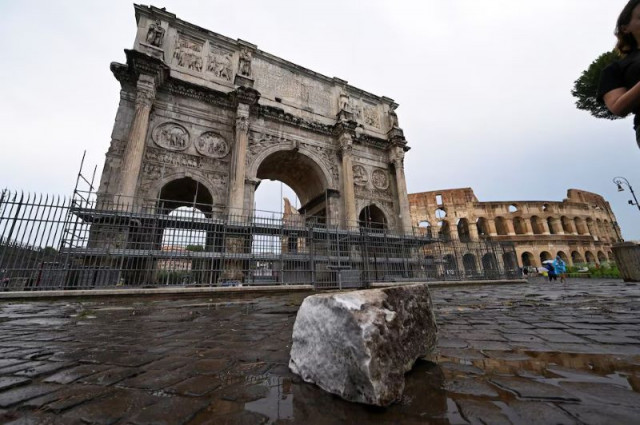Storm causes damage to Ancient Roman Arch of Constantine
The triumphal arch was built in the 4th century AD to celebrate the victory of Constantine

The Arch of Constantine, a giant ancient Roman arch next to the Colosseum, was damaged after a violent storm hit Rome, conservation authorities said on Tuesday.
In a statement to Reuters, which first reported on the accident, the Colosseum Archaeological Park confirmed that the monument was hit by lightning.
The triumphal arch was built in the 4th century AD to celebrate the victory of Constantine - the first Roman emperor to convert to Christianity - over his rival, Maxentius.
It is about 25 metres (82 feet) high and is located in the same pedestrian area where the Colosseum stands, a major tourist hotspot.
"A lightning strike hit the arch right here and then hit the corner and we saw this fly off," a tourist told Reuters, pointing to a large block of stone fallen to the ground.
Reuters video images showed other blocks of stone and rubble lying around the monument, and archaeological park staff working to collect them.
"All fragments were recovered and secured. Damage assessments have already begun and the analyses will continue tomorrow morning," the archaeological park said.
The arch was hit on its southern side, where pre-scheduled conservation work had started two days ago and which will now also focus on repairing the damage, it added.
The accident was said to have taken place during a heavy thunderstorm that felled trees and branches and flooded several streets of the Italian capital.
The Civil Protection agency said 60 millimetres (2.36 inches) of rain fell on central Rome in less than one hour, about as much as would normally fall in a month during autumn.


















COMMENTS
Comments are moderated and generally will be posted if they are on-topic and not abusive.
For more information, please see our Comments FAQ